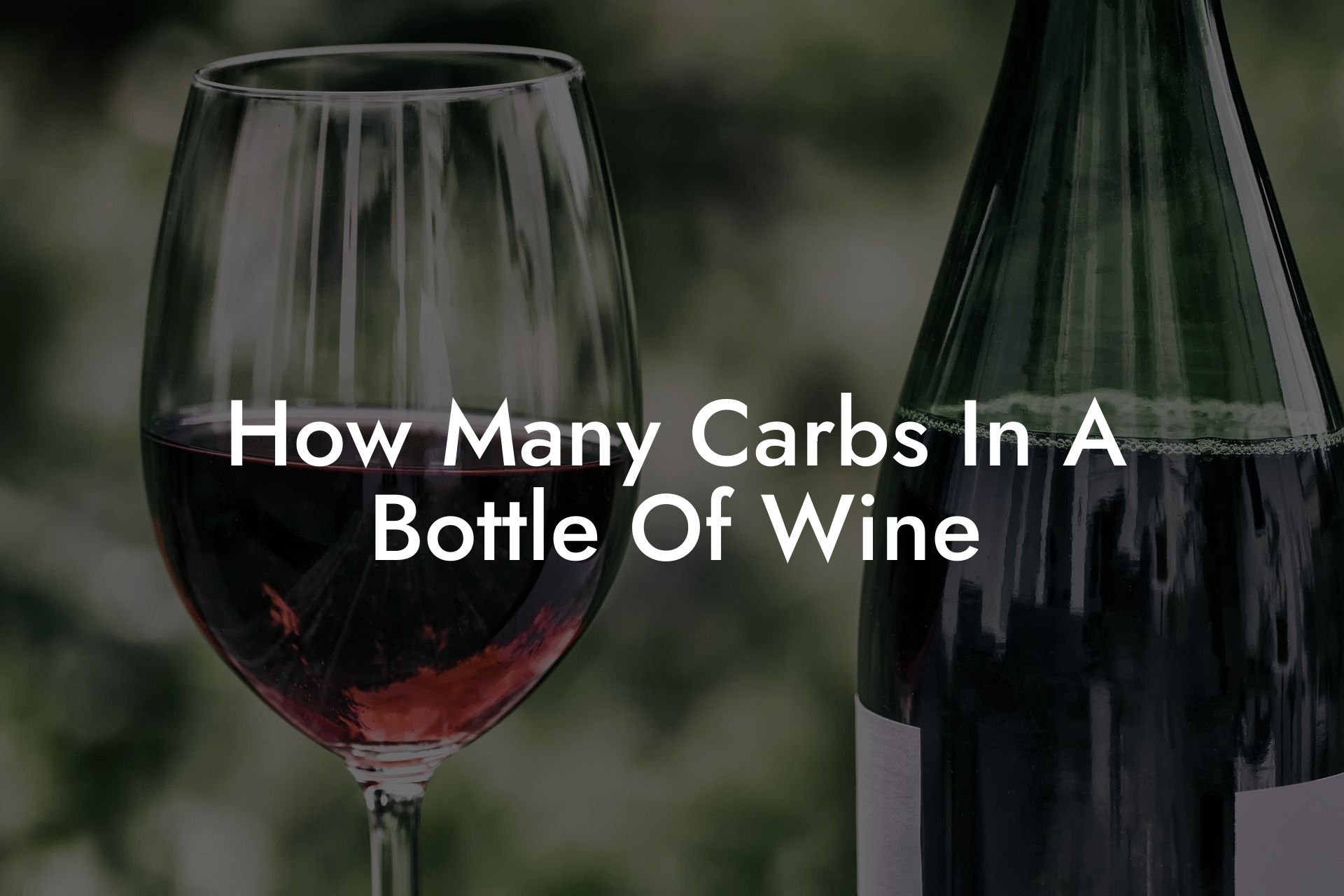Hey there, wine lovers! Are you on a low-carb diet and wondering if you can still enjoy a glass or two of your favorite vino? You're in luck because today we're diving deep into the world of wine and carbohydrates. So grab a glass, sit back, and let's get started on uncovering just how many carbs are lurking in a bottle of wine.
How Many Carbs In A Bottle Of Wine Table of Contents
Why Carbs Matter in Wine
The Lowdown on Carbohydrates
Carbohydrates (or carbs) are one of the main macronutrients our bodies need to function properly. They're the primary source of energy for our bodies and are found in various foods and drinks. Carbs can be divided into two categories – simple carbs (like sugar) and complex carbs (like whole grains and vegetables).
Carbs and Wine: The Basics
When it comes to wine, the main types of carbs we're concerned with are sugars. These sugars come from grapes and are turned into alcohol during the fermentation process. However, not all sugars are converted to alcohol, and the remaining sugars can contribute to the carb content of the wine.
Do You Want to Win a Free Bottle of Wine?
Don't miss out on the opportunity to win a free bottle of wine every week.
Enter our weekly prize draw today!
Carb Content in Different Wines
The carb content varies depending on the type of wine, its sweetness, and the fermentation process. Here's a general guideline for carb content in different wine types:
- Dry White Wines: Typically 2-4 grams of carbs per 5-ounce serving
- Dry Red Wines: Approximately 3-5 grams of carbs per 5-ounce serving
- Sweet Wines: Can range from 10-50+ grams of carbs per 5-ounce serving
- Sparkling Wines: Usually 1-5 grams of carbs per 5-ounce serving
Keep in mind that these numbers are for a standard 5-ounce serving, and a typical bottle of wine contains around 25 ounces. So, depending on the wine type, a full bottle could have anywhere from 5 to 50 (or more) grams of carbs.
How to Choose Low-Carb Wines
If you're looking to control your carb intake but still want to enjoy some wine, here are a few tips for selecting low-carb options:
1. Opt for dry wines
Dry wines have less residual sugar than their sweet counterparts, making them a better option for those watching their carb intake.
2. Choose wines with lower alcohol content
Higher alcohol content usually means more sugar has been converted into alcohol during fermentation, resulting in fewer carbs.
3. Pay attention to the wine's region
Wines from cooler wine-growing regions often contain fewer carbs due to less sugar in the grapes.
How Many Carbs In A Bottle Of Wine Example:
Imagine that you're planning a dinner party and one of your guests is on a low-carb diet. Looking at our carb guidelines above, you might consider serving a dry white wine like Sauvignon Blanc (approximately 2-4 grams of carbs per 5-ounce serving) or a dry red wine like Cabernet Sauvignon (around 3-5 grams of carbs per serving). This way, your guest can enjoy some wine without surpassing their daily carb limit.
And there you have it—our guide to carbs in wine! We hope this information has been helpful and inspires you to explore the wide world of wine, even on a low-carb diet. Share this article with your fellow wine enthusiasts, and don't forget to check out other informative and engaging content on Black Wine Club. Cheers to health and happiness!
Do You Want to Win a Free Bottle of Wine?
Don't miss out on the opportunity to win a free bottle of wine every week.
Enter our weekly prize draw today!












